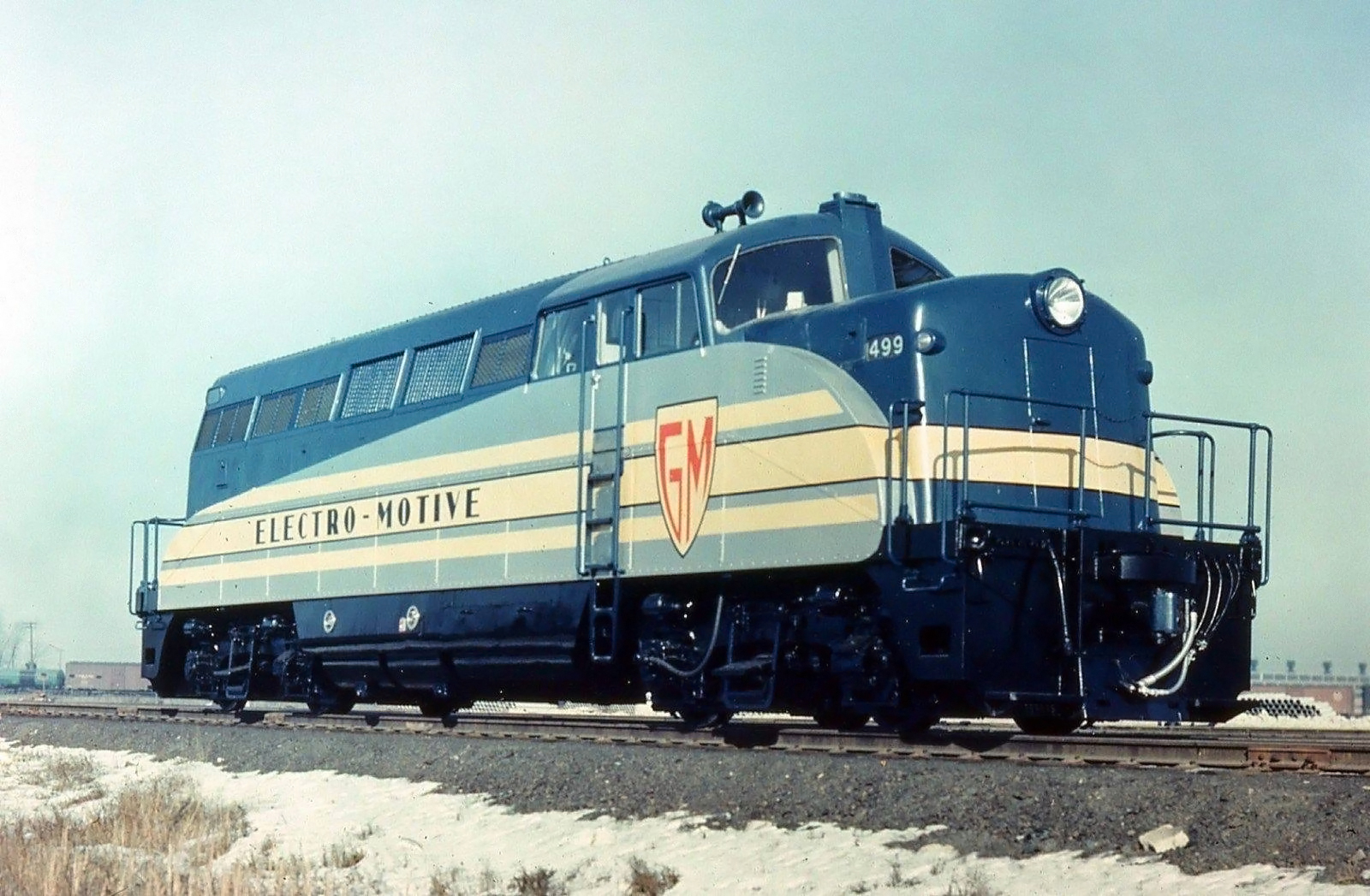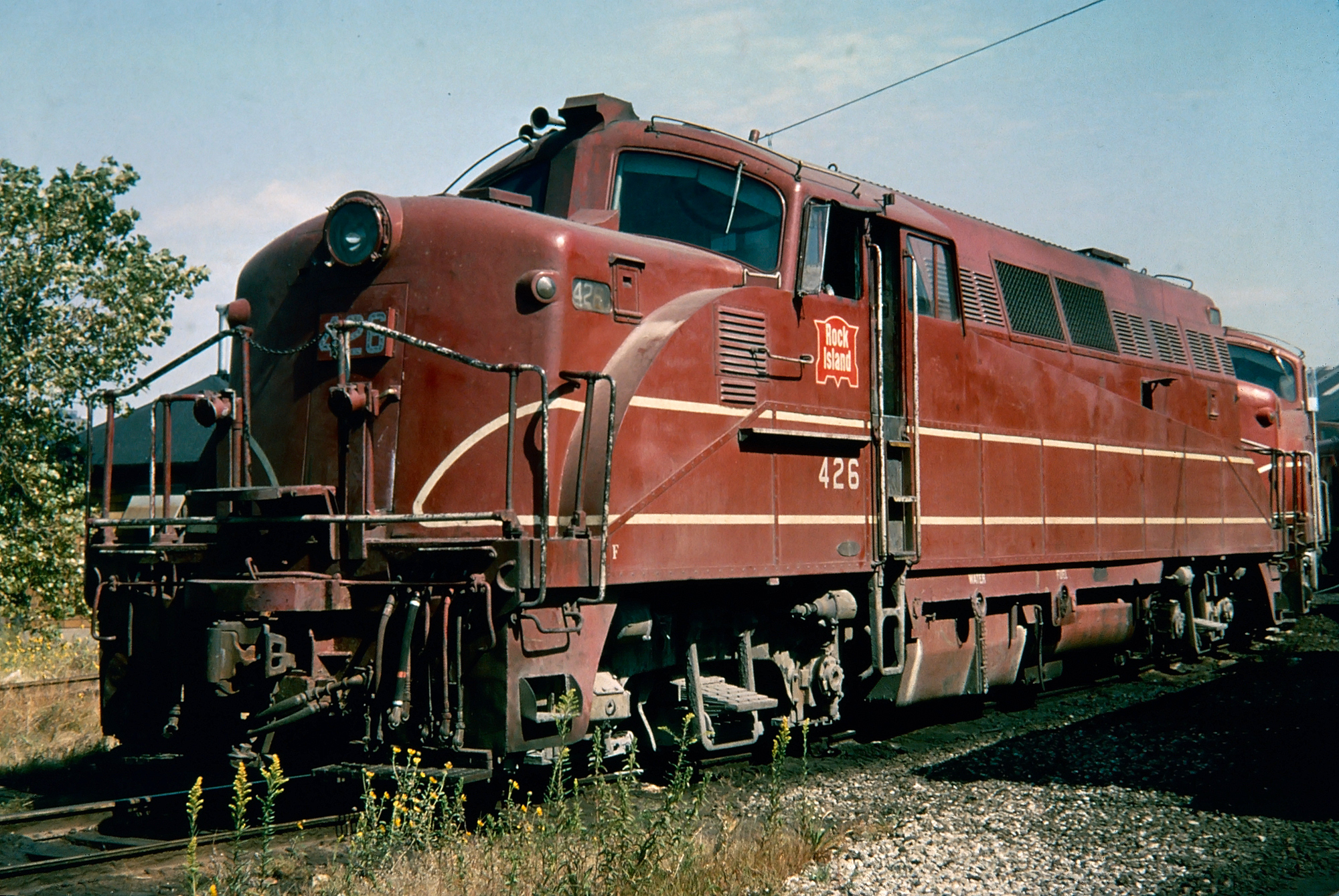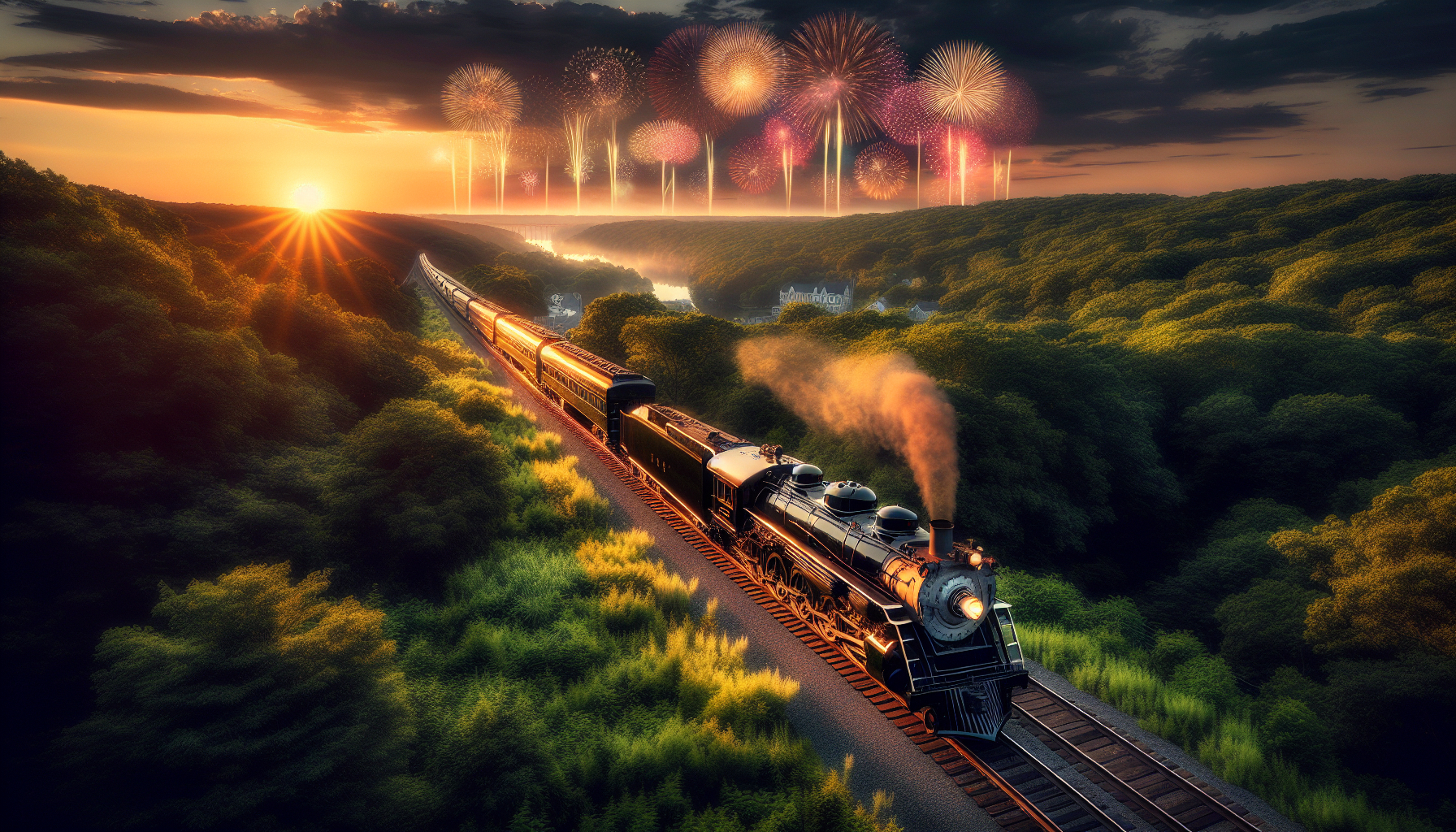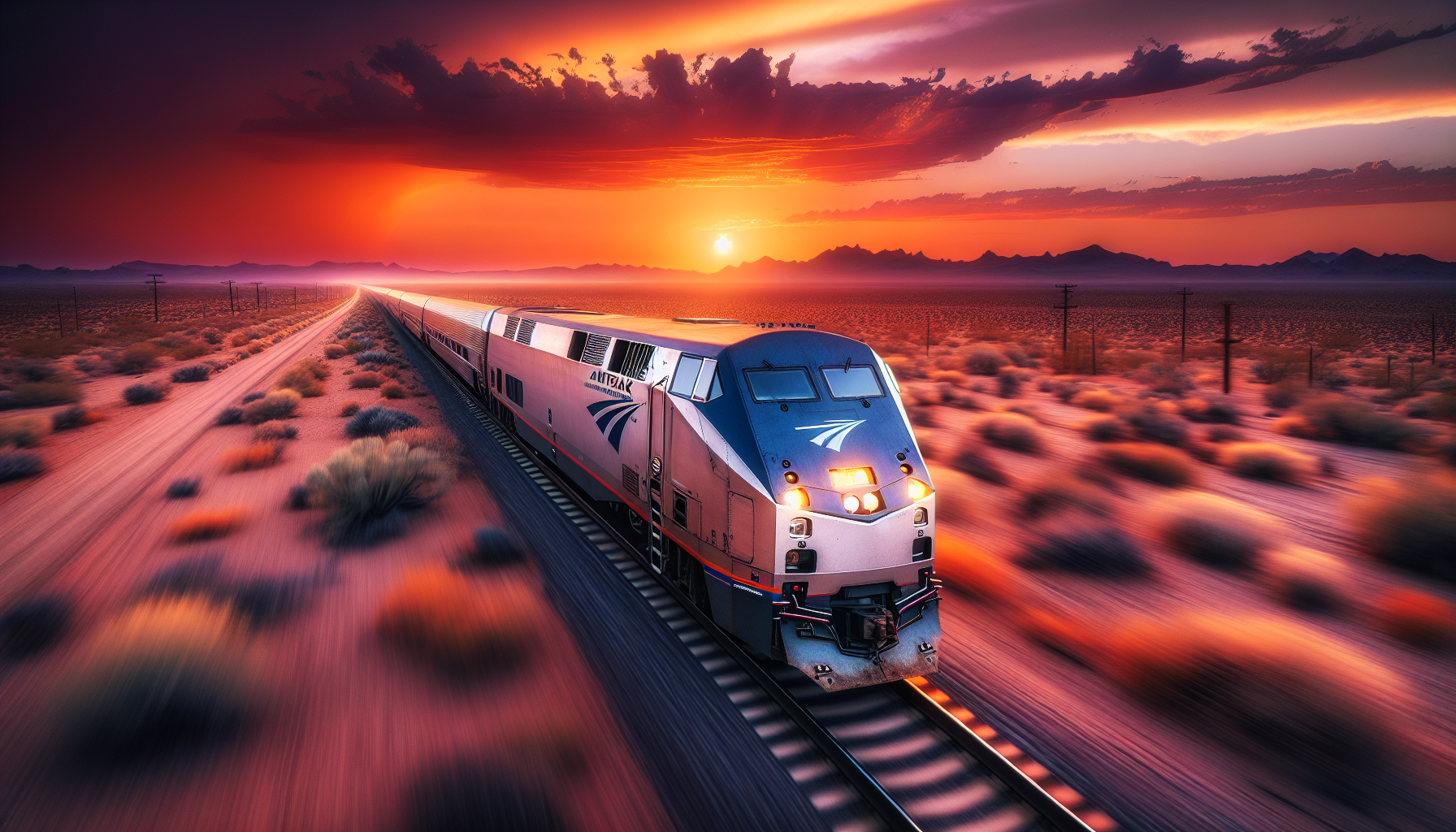EMD "BL2" Locomotives: Specs, Roster, History
Last revised: December 18, 2024
By: Adam Burns
Electro-Motive's BL2 was the stepping stone for the company's highly successful General Purpose (GP) series.
The locomotive was a derivative of the F3, EMD's most successful cab model until the F7 debuted in 1949. The builder felt a locomotive offering crews much better visibility for switching operations would be successful in local branch line service.
However, the road-switcher was not a new concept, and not even an EMD invention. In 1941 Alco had pioneered the design with the RS1, and the series became the builder's most successful, peaking with the RS3.
Unfortunately, demand for the BL2 never materialized and EMD ended production after only a year. Nevertheless, the company learned from the model's failure and followed up with the incredibly successful GP series.
Today, at least a half-dozen BL2s remain preserved with a few still operational. A great location to see one in action is at the West Virginia Central Railroad in Elkins, West Virginia which maintains an original Western Maryland unit, #82.
This locomotive, which still wears its WM "Fireball" livery, can be found pulling both public excursions and working freight service when-needed.
Photos
 Electro-Motive's BL-1 demonstrator, #499, soon after it was completed in February of 1948. This unit went on to become Chicago & Eastern Illinois #1602.
Electro-Motive's BL-1 demonstrator, #499, soon after it was completed in February of 1948. This unit went on to become Chicago & Eastern Illinois #1602.Overview
Electro-Motive went its own way in the road-switcher market. Despite Alco and Baldwin witnessing success, EMD remained reluctant (aside from introducing the NW3 and NW5 light road-switchers to compete against the RS1, both of which sold poorly).
The streamlined F series was designed for general road service and ill-equipped to perform switching chores or branch line work; engineers had a difficult time seeing crewman on the ground and the locomotives contained no footboards.
The success of its cab models, and the realization railroads still needed a locomotive in branch line service to complete dieselization, convinced EMD to push forward redeveloping its F3 for just such assignments.
In his book, "Vintage Diesel Locomotives," author Mike Schafer points out that in the late 1940s, 80 percent of the U.S. rail network at that time was comprised of branch or secondary lines.
To provide crews increased visibility, Electro-Motive redesigned the F3 by cutting down the width of the long trailing hood and installing windows to the rear of the cab for bi-directional viewing. In doing so, EMD believed this would correct sightline problems inherent with its cab designs.
 Rock Island BL2 #426, along with a mate and other units, lay over at the 22nd Street Yard in Chicago, Illinois, circa 1960. American-Rails.com collection.
Rock Island BL2 #426, along with a mate and other units, lay over at the 22nd Street Yard in Chicago, Illinois, circa 1960. American-Rails.com collection.Specifications
In his book, "EMD Locomotives," author Brian Solomon notes EMD dubbed the model the BL1, for Branch Line. The builder also placed footboards on the front and rear pilots, making switching work easier for ground crewmen.
Curiously, despite its intentions as a branch line/switching locomotive, EMD still retained streamlining characteristics to the BL1's carbody, in part because it was offered with optional steam generators for passenger service.
In doing so, however, the locomotive still lacked exterior walkways. In addition, engineers continued having difficulty easily seeing ground crewmen, and vice versa.
The initial BL1 demonstrator, #499, completed in February, 1948 differed only from the later BL2 by featuring an air-powered throttle and no MU capabilities.
Chicago & Eastern Illinois went on to purchase the demonstrator but ultimately few railroads found interest in this unique EMD design; only 58 were sold.
Data Sheet
| Entered Production | 2/1948 (BL1 Demonstrator #499) |
| Years Produced | 2/1948 - 5/1949 |
| Engine | 567B |
| Engine Builder | GM |
| Horsepower | 1500 |
| RPM | 800 |
| Cylinders | 16 |
| Length (End Of Front And Rear Platforms) | 54' 0" |
| Height (Top Of Rail To Top Of Cab) | 14' 6" |
| Width | 10' 7 ½" |
| Weight | 230,000 Lbs |
| Fuel Capacity | 800 Gallons |
| Air Compressor | Gardner-Denver |
| Air Compressor Model | WBO |
| Air Brake Manufacturer | Westinghouse |
| Air Brake Schedule | 24L |
| Trucks | B-B |
| Truck Type | Blomberg |
| Truck Wheelbase | 9' |
| Wheel Size | 40" |
| Traction Motors | D17B/D27B (4), GM |
| Primary Generator | D12/D12A/D14, GM |
| Auxiliary Generator | Delco (A8102) |
| Alternator | D14 |
| MU (Multiple-Unit) | Yes |
| Dynamic Brakes | Yes |
| Gear Ratio | 62:15 |
| Tractive Effort (Starting) | 55,000 Lbs at 25% |
| Tractive Effort (Continuous) | 40,000 Lbs at 9.3 mph |
| Top Speed | 65 mph |
Production Roster
Total Built = 59
| Owner | Road Numbers | Serial Numbers | Order Number | Completion Date |
|---|---|---|---|---|
| Electro-Motive/Demonstrator (BL1) | 499 (became Chicago & Eastern Illinois #1602) | 7428 | E1240 | 2/1948 |
| Chicago Indianapolis & Louisville | 30-33 | 4449-4452 | E975 | 4/1948 |
| Chesapeake & Ohio | 80-85 | 4724-4729 | E822 | 6/1948-7/1948 |
| Chicago, Indianapolis & Louisville (Monon) | 34-35 | 5243-5244 | E975 | 4/1948 |
| Boston & Maine | 1550-1553 | 5259-5262 | E889 | 7/1948, 9/1948 |
| Missouri Pacific | 4104-4111 | 5451-5458 | E906 | 5/1948, 9/1948 |
| Florida East Coast | 601-606 | 5528-5533 | E914 | 10/1948-12/1948 |
| Western Maryland | 81-82 | 5921-5922 | E960 | 10/1948 |
| Chicago & Eastern Illinois | 1600-1601 | 6012-6013 | E966 | 12/1948 |
| Rock Island | 425-429 | 6134-6138 | E974 | 12/1948-1/1949 |
| Chesapeake & Ohio | 1840 | 6275 | E994 | 10/1948 |
| Chesapeake & Ohio | 1841-1847 | 6276-6281 | E994 | 1/1949-3/1949 |
| Bangor & Aroostook | 550-555 | 8161-8166 | E1195 | 3/1949-4/1949 |
| Chicago, Indianapolis & Louisville (Monon) | 36-38 | 8420-8422 | E1253 | 5/1949 |
| Bangor & Aroostook | 556-557 | 8616-8617 | E1195 | 4/1949 |
 Florida East Coast BL2 #605. This was one of six the FEC owned. No date or location listed. American-Rails.com collection.
Florida East Coast BL2 #605. This was one of six the FEC owned. No date or location listed. American-Rails.com collection.In his book, "Diesel Locomotives: The First 50 Years, A Guide To Diesels Built Before 1972," author Louis Marre notes that of these Boston & Maine, Chesapeake & Ohio, and Rock Island operated steam generator-equipped BL2s for passenger service.
The Rock installed these after delivery while the C&O's variants had been ordered by predecessor Pere Marquette Railway before the two roads officially merged in June, 1947.
Postscript
Despite the BL2's failure from a sales perspective, EMD remained confident a "branch line" model would be successful. The builder went back to the drawing board and cataloged a design which more closely resembled the road-switchers Alco and Baldwin had been producing since the early/mid 1940s.
The GP7 of 1949 featured an offset cab, creating a short hood at one end and trailing long hood. With walkways surrounding the locomotive, crews both in the cab and on the ground could see one another much more easily. In addition, with its 1,500 horsepower the GP7 could be utilized in all types of applications, from switching assignments to general road service.
The model became one of EMD's best sellers and one of the best known first-generation locomotive models of all time. The following GP9 of 1954 sold even better and railroads eventually moved away entirely from the builder's classic streamlined designs.
Preservation
Despite the few number built, and several later traded-in to EMD on newer models, a handful of BL2s were eventually preserved.
Additionally, at least four are still operational; Western Maryland #82 at the West Virginia Central/Durbin & Greenbrier Valley, Monon #32 at the Kentucky Railway Museum, the Stourbridge Line in Pennsylvania operates Bangor & Aroostook (BAR) #54.
Others preserved include WM #81 at the Baltimore & Ohio Railroad Museum, BAR #56 at the National Railroad Museum in Green Bay, and BAR #57 at the Cole Transportation Museum in Maine.
Sources
- Foster, Gerald. A Field Guide To Trains. New York: Houghton Mifflin, 1996.
- Hayden, Bob. Diesel Locomotives: Cyclopedia, Volume 2 (Model Railroader). Milwaukee: Kalmbach Publishing Company, 1980.
- Marre, Louis A. Diesel Locomotives: The First 50 Years, A Guide To Diesels Built Before 1972. Milwaukee: Kalmbach Publishing Company, 1995.
- Pinkepank, Jerry A. Diesel Spotter's Guide. Milwaukee: Kalmbach Publishing Company, 1967
- Schafer, Mike. Vintage Diesel Locomotives. Osceola: MBI Publishing, 1998.
- Solomon, Brian. EMD Locomotives. Minneapolis: MBI Publishing Company, 2006.
Recent Articles
-
New Jersey Independence Day Train Rides: A Complete Guide
May 16, 25 11:52 PM
In New Jersey, one of the more unique and memorable ways to celebrate this holiday is by experiencing a nostalgic train ride at the Cape May Seashore Lines. -
Michigan Independence Day Train Rides: A Complete Guide
May 16, 25 06:49 PM
Independence Day is a celebrated occasion across the United States, and Michigan offers a unique way to experience this patriotic holiday — through nostalgic and scenic train rides. -
Guide To Amtrak/Passenger Trains In Vermont
May 16, 25 02:25 PM
This article delves into the current landscape of train services in Arizona, exploring the options available, the history of rail in the state, and potential future developments.


